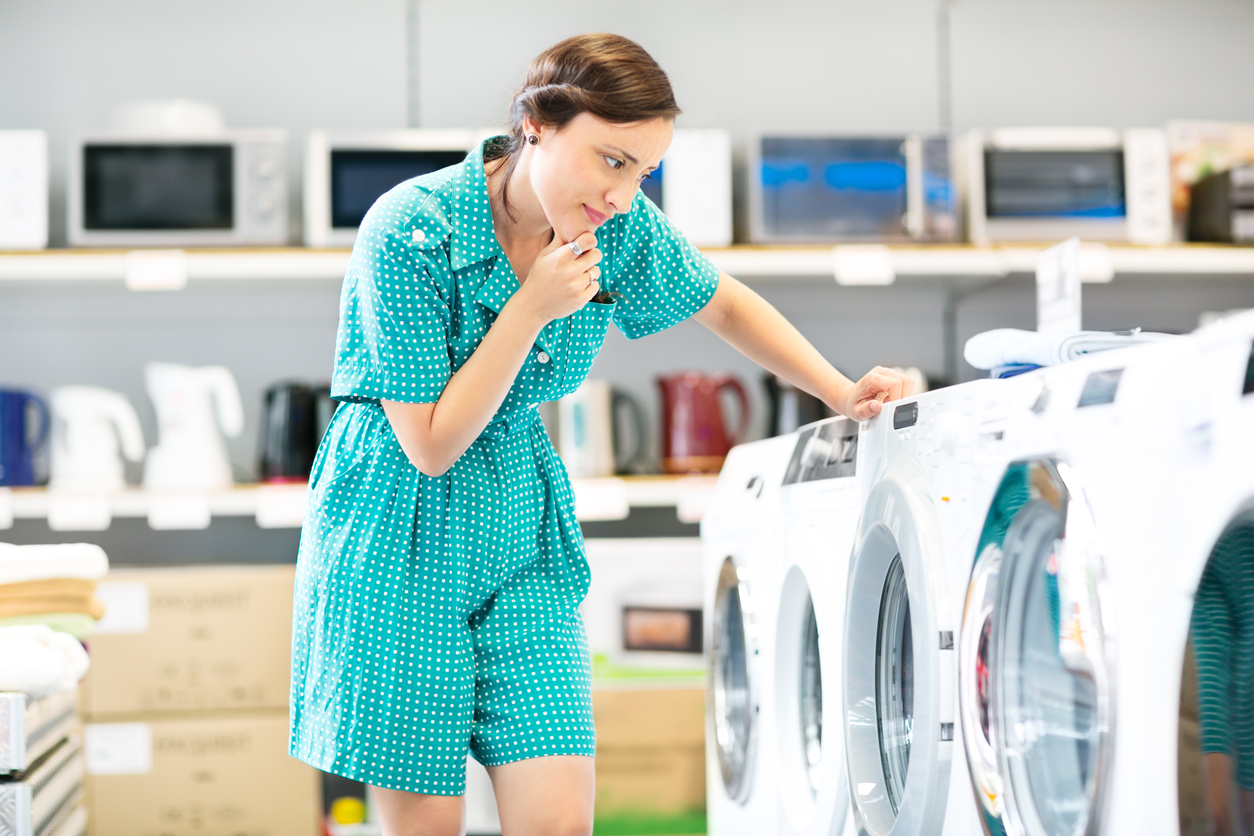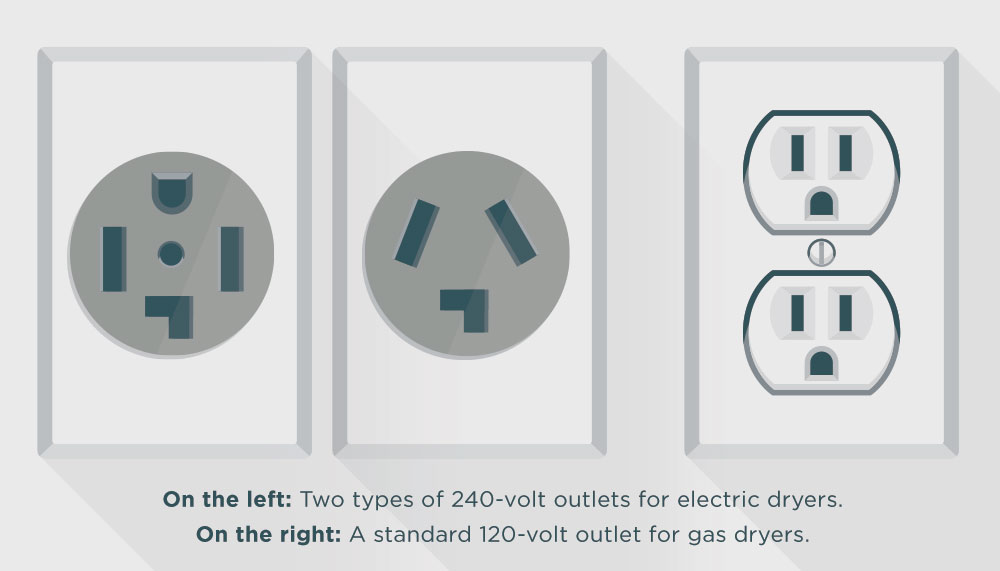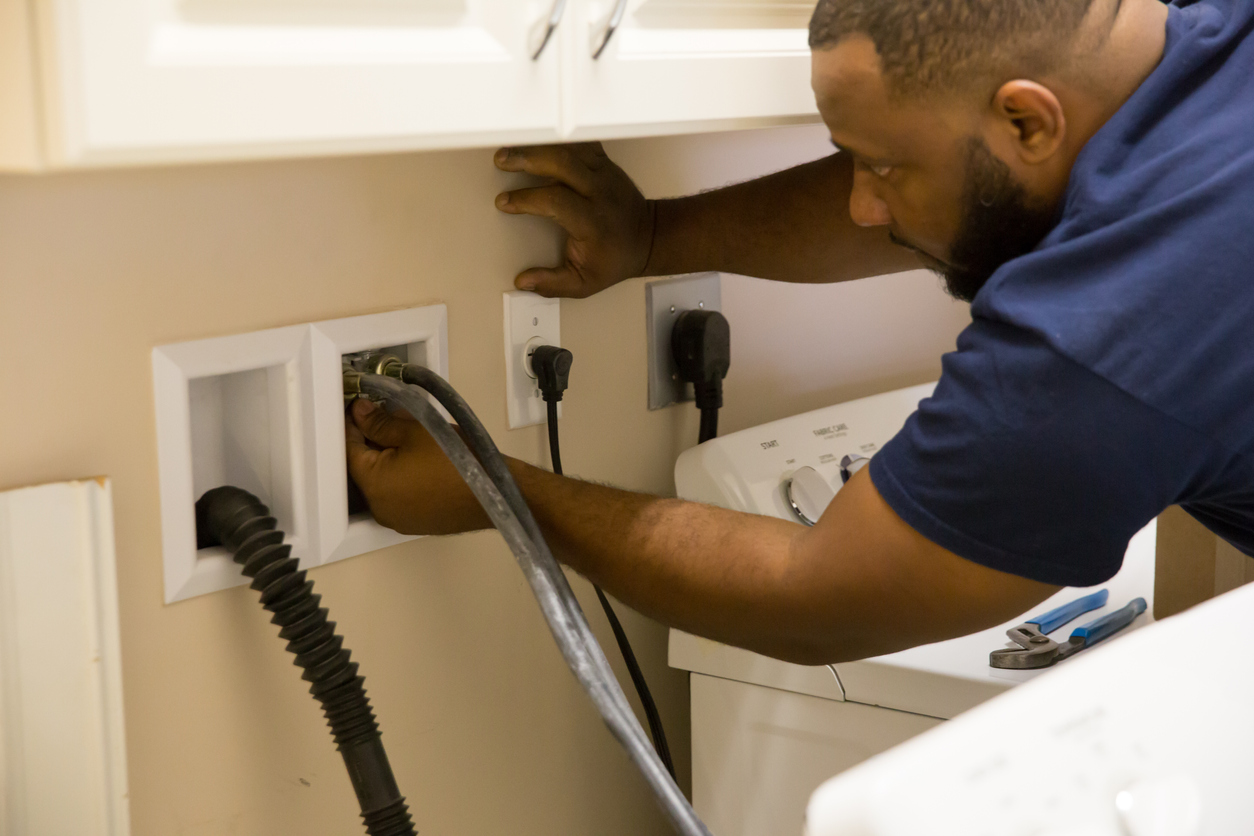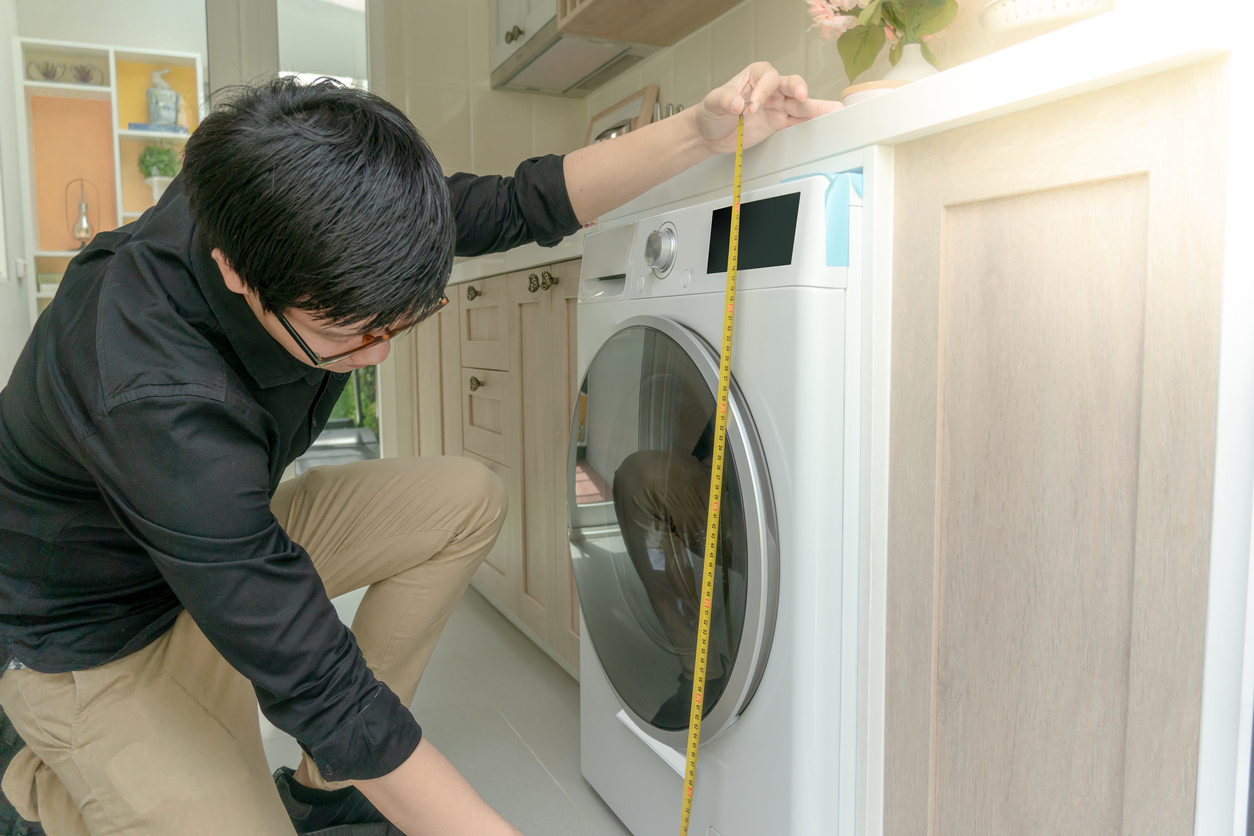No matter the brand or the model, there are certain aspects that should always be taken into consideration before you shop for a washer or dryer. There’s a lot of thought that goes into purchasing a new laundry appliance, but once you’ve learned these key points, you’ll be able to shop with confidence knowing your new purchase is a perfect fit in your home!

1. Establish Which Kind of Connection
First things first, all washers are electric. That’s understandable, but did you also know all dryers use electricity, too? Yes, even gas dryers.
The difference is, while an electric dryer uses electricity to powers an element that heats up the air, a gas dryer uses electricity to spark the burner and heat up the air. Regardless of the type of dryer, both require connection to a 240-volt electrical outlet in order to operate.
Does your home have the right 240-volt outlet?
- A 240-volt outlet will provide access to plugs with either three or four prongs.
- It will not look like the standard two-prong outlet used for small appliances and electrical devices.
However, homes manufactured after the year 2000 only use a four-prong dryer outlet. If your home was built before 2000 and has not been updated, you can either hire an electrician to convert your existing three-prong power outlet into a four-prong power outlet, or have your dryer’s four-prong cord converted into a three-prong cord. For information on how to convert a dryer to work with your home’s power outlet, give us a call or stop on by!

If your dryer plug looks like the examples on the left, it is electric. If your dryer plug looks like the example on the right, it is gas.
2. Hoses and Ventilation
Understanding your home’s setup will also keep you from purchasing an appliance that is not compatible with your home’s connections.
When we install a washer, we include two supply hoses—one for cold water and another for hot water—a drain hose, and a power cord in the hook-up charge. Keep in mind: The drain outlet needs a place where dirty water can empty, either through a dedicated standpipe (often located near the water feed handles) or into a laundry tub.

A dryer will come with a power cord and use either a straight exhaust system or side-venting exhaust system.
A bottom-venting dryer exhausts hot air and moisture through the back of the dryer to outside of the home. Side-venting dryers also exhaust outside, but the vent located to the side of the unit. This will change how your dryer can be positioned, as well as add a few inches to the dryer’s width. Luckily, most dryers can be modified by our professionals in order to exhaust accordingly to your home’s layout.
Unlike vented dryers, ventless dryers recycle damp air through a heat exchanger, capturing moisture and redistributing hot air back into the drum. This process eliminates the need for ductwork; however, depending on the brand and model, the moisture that is accumulated will either collect in a reservoir tank or drain through a hose much like a washer. When a hose is used, a standpipe or laundry tub will also need to be used.
3. Take Proper Measurements
You might already know to measure your laundry area to ensure your new washer or dryer will fit perfectly, but have you considered the doorways getting into your laundry space?
Entryways and hallways are notoriously slim, and even when doors are temporarily disassembled off a washer or dryer, entry can be challenging for bulkier laundry appliances, like front-load washers or dryers.
Additionally, it’s important to measure the space around a washer and dryer. On top of the height, width, and depth, top-loading washers should also account for clearance when the lid is open to avoid hitting overhead cabinetry. The same should be considered for front-loading washers and dryers with doors that open out. Are there any obstructions in front, like a parked car that shares the laundry space in your garage?
In order to make delivery, installation, and operation easier, make sure to measure your space a minimum of three times for the most accurate results. Keep these considerations in mind:
- Height (including height with lid open for top-loading washers)
- Width (including extra width for side-venting dryers)
- Depth (including depth with door open for front-loading laundry appliances)
- A minimum of six inches behind a washer and dryer for connections
- Connections are within three to five feet of unit

Elevate
Now that you’ve learned the basics, you’re ready to start shopping for a new laundry appliance! Whether you’re upgrading or replacing a single washer or dryer, purchasing a laundry pair or stacked laundry unit, you can count on Grand Appliance and TV to deliver consistently low prices backed by expert sales advice and service. Experience the Grand difference today—shop in-store or online!
